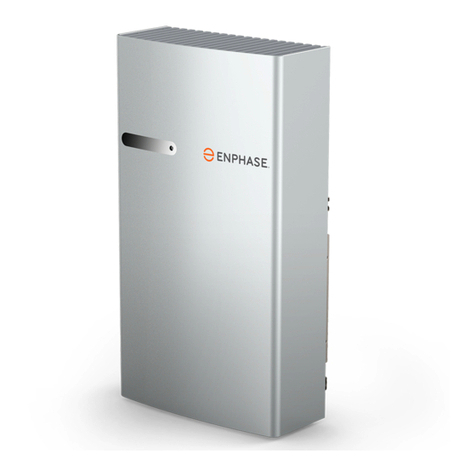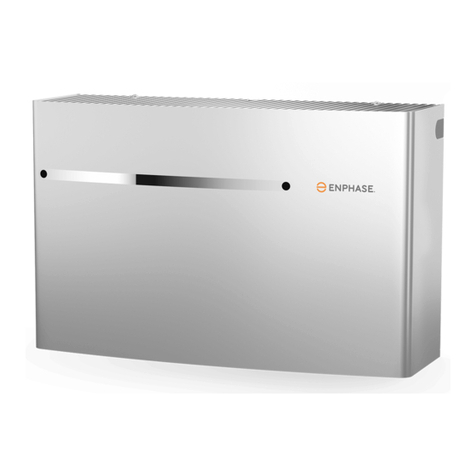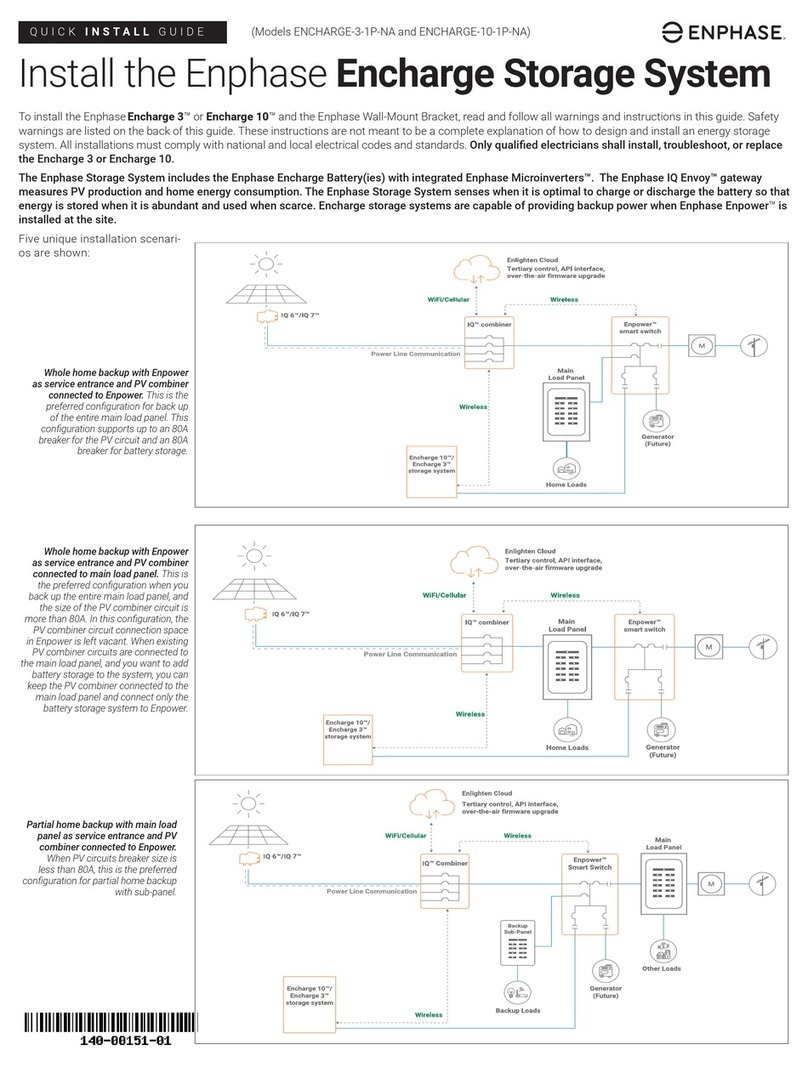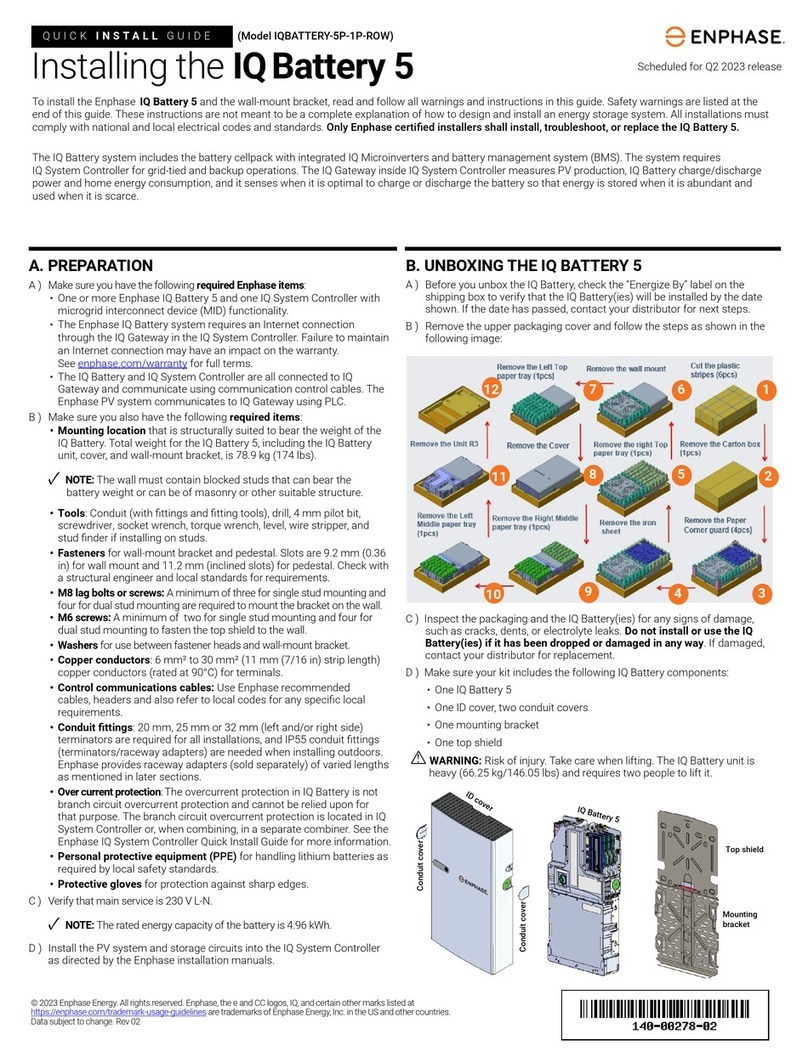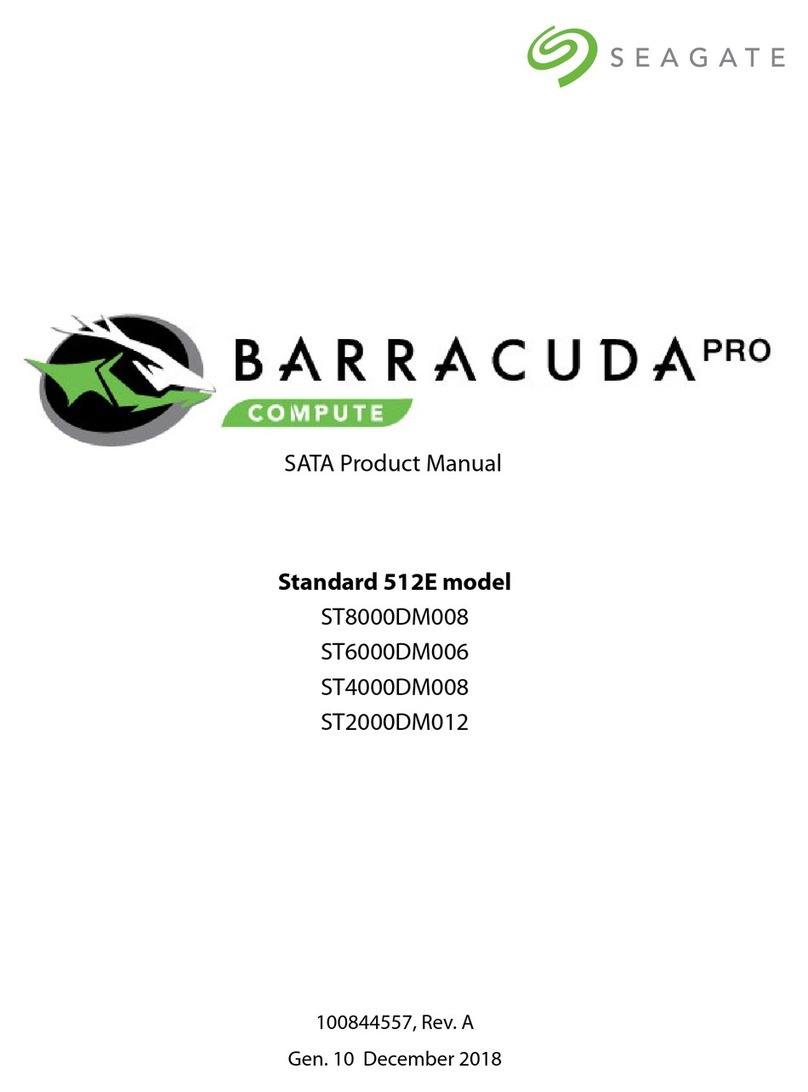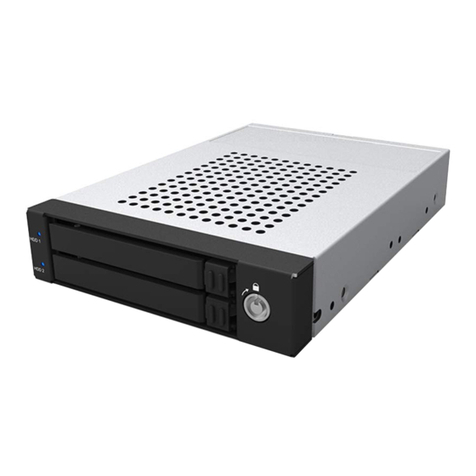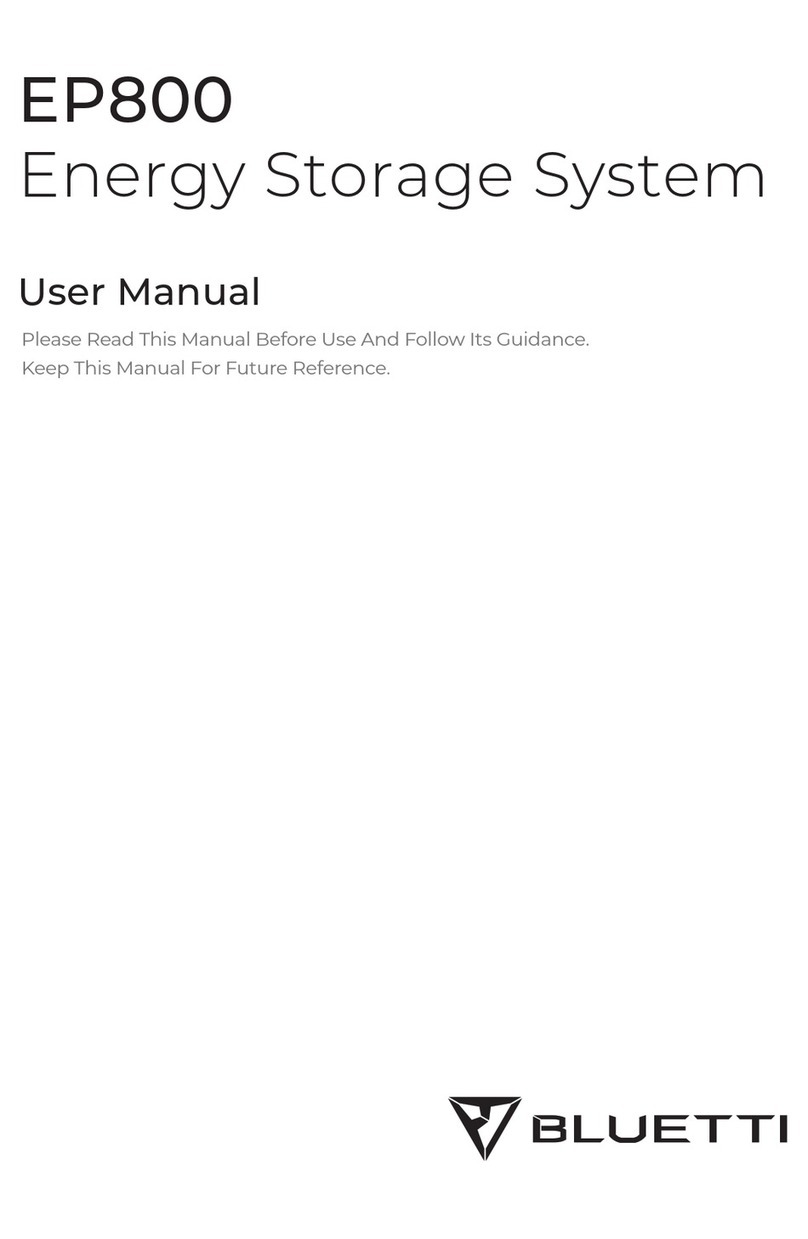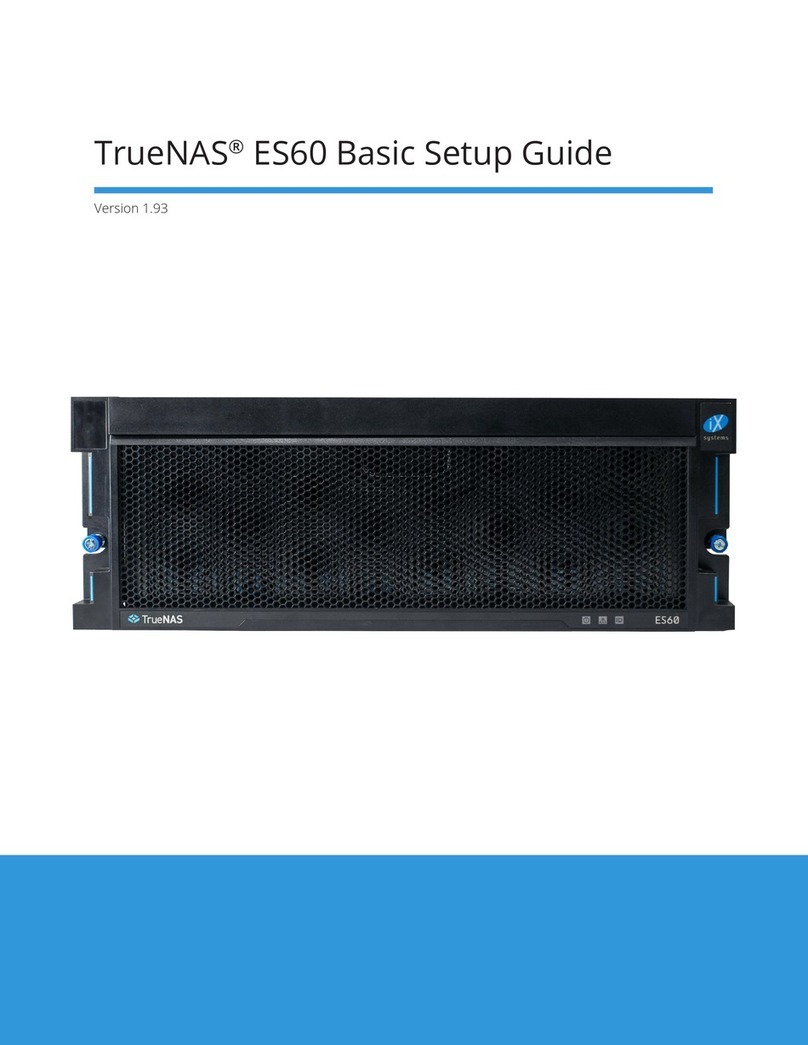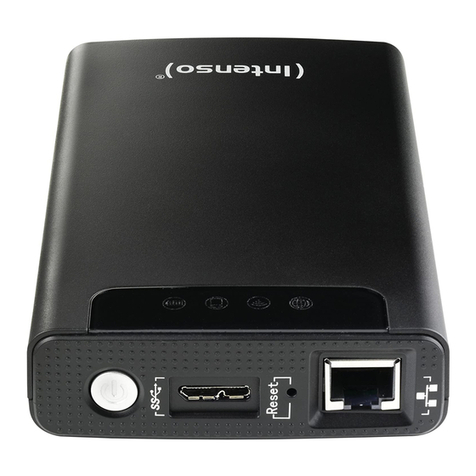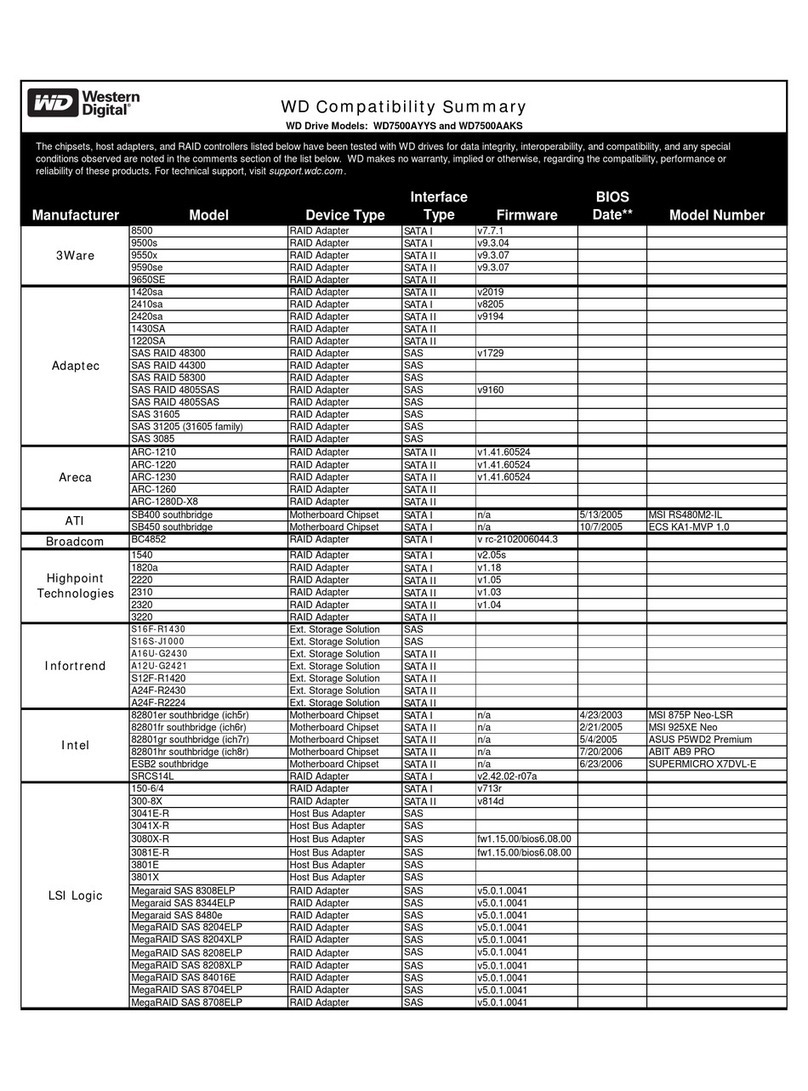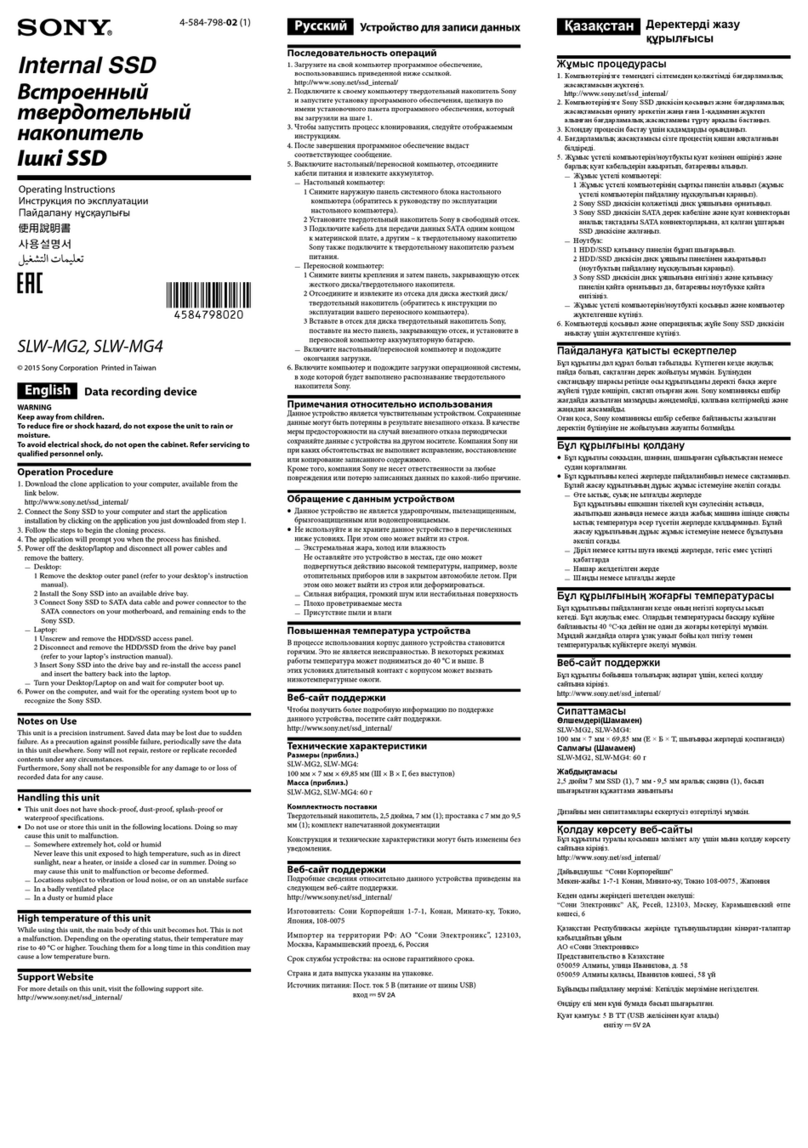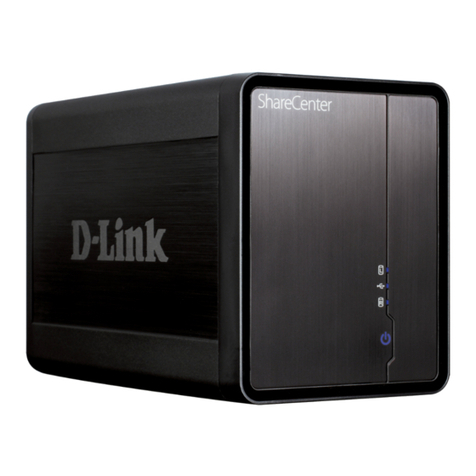enphase ENCHARGE-3T-1P-INT User manual

QUICK INSTALL GUIDE (Models ENCHARGE-3T-1P-INT and ENCHARGE-10T-1P-INT)
Install the Enphase Encharge Storage System
To install the Enphase Encharge 3T™ storage system or Encharge 10T™ storage system and the Enphase wall-mount bracket, read and follow all warnings and
instructions in this guide. Safety warnings are listed on the back of this guide. These instructions are not meant to be a complete explanation of how to design
and install an energy storage system. All installations must comply with national and local electrical codes and standards. Only qualied electricians shall
install, troubleshoot, or replace the Encharge 3T or Encharge 10T.
The Encharge™ storage system includes the Enphase Encharge Battery(ies) with integrated Enphase IQ™ Microinverters. The Enphase Envoy™ communica-
tion gateway measures PV production and home energy consumption. The Encharge storage system senses when it is optimal to charge or discharge the
battery so that energy is stored when it is abundant and used when scarce.
Unique installation scenario is shown below:
© 2021 Enphase Energy. All rights reserved. Enphase, the Enphase logo, Encharge storage system, Envoy, IQ microinverter, Installer Toolkit, Enlighten and
other trademarks or service names are trademarks of Enphase Energy, Inc. Data subject to change. Rev 04 - 07-20-2021
Self consumption, grid tied.
The preferred conguration when
adding battery storage and PV for self
consumption in a grid-tied application with
no option for backup during outages. PV
and Encharge will not operate when the
grid is unavailable.
PREPARATION
A ) Inspect the packaging and the Encharge Battery(ies) for damage, such
as cracks, dents, or leaking electrolyte. Do not install or use the Encharge
Battery(ies) if it has been damaged in any way. If damaged, contact your
distributor for replacement.
B ) Ensure that your kit includes the following Encharge components:
• The Encharge 10T includes three batteries and two interconnect cable
assemblies, an Encharge 10T triple-width cover, and a triple-width
mounting bracket.
• The Encharge 3T includes one battery, and single-width cover with a
single-width mounting bracket.
NOTE: Check the “Energize By” label on the shipping box to verify that
the Encharge Battery(ies) will be installed by the date shown. If the date
has passed, contact your distributor for next steps.
* WARNING: Risk of injury. Take care when lifting. The Encharge
Battery unit is heavy (40.5 kg) and requires two persons to lift.
C ) Ensure you have the following required Enphase items:
• The Enphase Encharge system requires an Internet connection
through the Envoy. Failure to maintain an Internet connection may
have an impact on the warranty. See enphase.com/warranty for full
terms.
• Wireless communications kit (COMMS-KIT-EU-01) to be installed at
the Envoy for communications with Encharge. Includes USB cable for
connection to Envoy along with communication extender and allows
wireless communication with Encharge
D ) Make sure you also have the following required items:
• Mounting location that is structurally suited to bear the weight of the
Encharge Battery(ies). Total weight for the Encharge 3T, including the
Encharge base unit, cover and wall mount bracket, is 48.8 kgs. Total
weight for the Encharge 10T, including the three Encharge base units,
cover, and wall mount bracket, is 143.6 kgs.The wall must contain
blocked studs that can bear the battery weight or can be of masonry
or other suitable structure.
• Tools: conduit (with ttings and tting tools), drill, 4 mm pilot bit,
screwdriver, socket wrench, torque wrench, level, wire stripper, and
stud nder if installing on studs.
• Fasteners for wall mount bracket. Slots are 9.2 mm. Check with a
structural engineer and local standards for requirements:
Single-width bracket for Encharge 3T: A minimum of three #8 mm lag
bolts or screws, 7.6 cm long (depending on attachment wall).
Triple-width bracket for Encharge 10T: A minimum of nine #8 mm lag
bolts or screws, 7.6 cm long (depending on attachment wall).
• Washers for use between fastener heads and wall-mount bracket.
• Copper conductors: 2.5 - 10 mm2(11mm strip length) copper
conductors (rated at 75° C or 90° C) for terminals.
• Conduit ttings: 12 mm or 20 mm (left side) terminators are required
for all installations, and IP54 conduit ttings are needed when
installing outdoors.
• Over current protection: The overcurrent protection in Encharge is not branch
circuit overcurrent protection and cannot be relied upon for that purpose. The
branch circuit overcurrent protection SHALL be located separately.
• Personal protective equipment (PPE) for handling lithium batteries as
required by local safety standards.
• Protective gloves for protection against sharp edges.
E ) Verify that main service is 230 V L-N. Encharge batteries cannot be installed
between L1 and L2.
F ) Note that the rated energy capacity of the battery is 3.5 kWh.
G ) Install the PV system as directed by the Enphase installation manuals.
Power Line Communication

INSTALLATION
Plan a location for the Encharge batteries
The Encharge housing is IP55 and can be installed indoors or outdoors. The
terminal blocks accepts copper conductors of 2.5 - 10 mm2.
A ) Following local standards, choose a well-ventilated location where
the ambient temperature and humidity are within -15° C to 55°
C and 5% to 100% RH, non-condensing, preferably out of direct
sunlight. The optimum ambient temperature range for installation
location is 0º C to 30º C. Provide smoke alarms in the residence in
accordance with building, re and installation codes.
B ) Ensure that the mounting location can sustain the total weight
of the Encharge batteries and mounting bracket. Total weight
for the Encharge 3T, including the Encharge base unit, cover and
wall mount bracket, is 48.8 kgs. Total weight for the Encharge 10T,
including the three Encharge base units, cover, and wall mount
bracket, is 143.6 kgs.
*WARNING: The installer should install blocking between studs
to ensure that no single stud carries the entire weight load of the
Encharge batteries.
C ) Plan the mounting location to be at least 15 cm off the ground and
15 cm from the ceiling. Keep the Encharge away from falling or
moving objects, including motor vehicles.
*WARNING: If mounted in the path of a motor vehicle, we
recommend a mounting height that is 91 cm minimum above the
oor.
D ) Ensure that there are no pipes or electrical wires where you plan to drill.
E ) Plan to maintain at least 1 m of clearance in front of each Encharge.
Allow at least 15 cm clearance on top and bottom of the Encharge
so that the vents on the top and bottom of the units are not blocked
for air circulation.
F ) Consider the dimensions of the Encharge batteries, easy access,
height, and length of cable when selecting the location.
G ) Follow all local standards.
H) Up to two Encharge 10T (or six Encharge 3T) units can be daisy
chained on one circuit. For installations with more than this number
of units, there must be a separate load center, subpanel, or circuit
combiner with over current protection to combine the daisy chained
circuits. You must select proper conductors and AC breaker for
these circuits according to local codes, standards, and other
applicable requirements.
The subpanel could be a small, two circuit box with circuit breakers.
The circuit breakers in the box would have to be suitable for
back-feeding, per local grid connection regulations.
Select the right size subpanel and breakers based on the number of
Encharge units being installed.
To do this, you must purchase an off-the-shelf subpanel and install
as shown in the following image:
1Install the AC disconnect
Following all local codes and standards:
A ) Install an AC isolator that can break the maximum rated current of
the branch circuit under load. The AC isolator must be installed in
line-of-sight of Encharge, per local regulations.
B ) Each Encharge unit is suitable for use with up to 10 mm2wires on a
maximum 40 A branch circuit.If more than six Encharge 3T or two
Encharge 10T are installed, a separate subpanel must be installed
between the Encharge units and main panel to combine the Encharge
circuits together. All circuit breakers in the subpanel must be suitable
for back-feeding, per local grid connection regulations.
C ) Verify that AC voltage at the site is within range: single-phase L to N
voltage must measure between 184 and 253 VAC.
2
Prepare to install the wall-mount bracket
A ) Make sure that the planned position for the wall-mount bracket
meets clearance requirements as shown. The image depicts
a single-width bracket for the Encharge 3T, but clearances and
requirements are the same when installing a triple-width bracket for
the Encharge 10T.
B ) Ensure that the mounting location can sustain the weight of the
Encharge batteries and mounting bracket. Total weight for the
Encharge 3T including the mounting brackets and cover is 48.8
kgs, while the total weight for Encharge 10T including the mounting
bracket and cover add up to 143.6 kgs.
C ) Starting at installation position closest to the power source, mark a
level line on the wall as a guide.
* WARNING! Multiple risks. Make sure not to drill or attach into
electric wiring or pipes that are in the wall!
3
Mounting on vertical stud
Encharge battery
* WARNING! Parallel power production sources only. Do not connect
load circuits.
NOTE: The above shown image is just for reference. Use other slots
on the wall mount if additional xing is required for stability (To be
assessed by the installer).
Wood stud

Encharge 3T — single-width bracket
A ) Place the wall-mount bracket on the wall so that the mounting holes
of the bracket align with the center of the stud.
* WARNING! Risk of injury and equipment damage. Use the unit
mounting holes only to mount the base unit of Encharge to the wall
mount. Do not use the unit mounting holes to secure the bracket to
the wall.
B ) Use a level to keep the bottom of the wall-mount bracket level.
C ) Use #20(8 mm) screws (or masonry attachments for masonry)
to attach the bracket using one screw and washer for each slot
(9.2mm). Use a minimum of three screws in each mounting bracket.
Tighten all screws to manufacturer’s specied torque values.
D ) Verify that the wall-mount bracket is solidly attached to the wall.
* WARNING! Risk of injury and equipment damage. Do not mount
an Encharge 3T on a bracket that is not properly mounted.
E ) If installing additional batteries, install adjacent wall-mount brackets,
as needed. Be sure to align the mounting holes in the wall-mount
bracket to the center of the wall stud. You may install another row
of brackets above the one already installed. Maintain at least 15cm
vertical clearance between rows of Encharge installations, and
ensure that the wall can support the structural load (weight) of the
installation.
* WARNING! Risk of injury and equipment damage.
4
Install the wall mount bracket(s)
Follow the instruction below for the type of bracket that you are installing.
* WARNING! Risk of injury and equipment damage. Attach the wall mount to
the wall so that it is no more than ve degrees from vertical. See the following
image for reference:
Encharge 10T — triple-width bracket
A ) Place the wall-mount bracket on the wall so that the mounting holes of
the bracket align with the center of the stud, and the mounting holes on
the left and right align with the adjacent studs.
* WARNING! Risk of injury and equipment damage. Use the unit mounting
holes only to mount the base unit of Encharge to the wall mount. Do not
use the unit mounting holes to secure the bracket to the wall.
B ) Use a level to keep the bottom of the wall-mount bracket level.
C ) Use #20(8 mm) screws (or masonry attachments for masonry) to
attach the bracket using one screw and washer for each slot (9.2mm).
Use a minimum of nine screws in each mounting bracket to support the
three Encharge battery units. There is an array of slots so that you can
choose those that allow you to mount the bracket on studs. Tighten all
screws to manufacturer’s specied torque values.
D ) Verify that the wall-mount bracket is solidly attached to the wall.
* WARNING! Risk of injury and equipment damage. Do not mount
Encharge 10T batteries on a bracket that is not properly mounted.
E ) If installing additional batteries, install adjacent wall-mount brackets, as
needed. Be sure to align the mounting holes in the wall-mount bracket
to the center of the wall stud. You may install another row of brackets
above the one already installed. Maintain at least 15 cm vertical
clearance between rows of Encharge installations, and ensure that the
wall can support the structural load (weight) of the installation.
* WARNING! Risk of injury and equipment damage.
Allowable tilt from vertical for Encharge installation:
Single-width mounting bracket
Front view Angle view
Wall mount
slots
Unit
mount
key
holes
Wall
mount
slots
Unit
mount
key holes
Triple-width mounting bracket
Vertical +5° inclination -5° inclination
430 mm
775 mm
188mm
43 mm
1270 mm
478 mm
9.2mm
478 mm
43 mm
418 mm
9.2 mm
* If the difference in atness is more than 2mm, recommend installing a substructure like
unistrut for better alignment of the units.
Mounting Surface
Flatness (Across
the Installation
width and height)
recommended to
be within 2mm*
ENCHARGE 10T
MOUNTING SURFACE
ENCHARGE 3T
MOUNTING SURFACE
Mounting Surface Flatness (Across
the Installation width and height)
recommended to be within 2mm*

Mount the Encharge Battery(ies) on the wall
* WARNING: Risk of injury. Take care when lifting.
Each Encharge battery base unit is heavy (40.5 kgs) and requires
two persons to lift.
* WARNING! Risk of injury and equipment damage. Avoid dropping
the Encharge Battery(ies). Doing so may create a hazard, cause seri-
ous injury, and/or damage the equipment.
* WARNING! Risk of injury and equipment damage. Protect the
Encharge Battery(ies) from impact damage and improper use.
* WARNING! Risk of injury and equipment damage. Do not hold the
microinverters to lift the unit during installation.
A ) Two person together must lift a single Encharge battery base unit
from the packaging and place it in upright position (as shown in the
following image) on a at surface.
B ) Locate the Encharge lifting points:
C ) The rst person lifting must use points aand d(as shown) to lift the
battery.
D ) The second person lifting must use points band c(as shown) to lift
the battery.
E ) Together, lift the Encharge battery and bring it to the already
mounted bracket.
F ) Hold the Encharge battery straight so that the four bolts on the back
of the Encharge battery pass through the four key hole slots on the
corner of the mounting bracket.
* WARNING! Risk of injury and equipment damage. Do not release
the Encharge battery unit until you ensure that the Encharge battery
unit is fully seated in the wall-mount bracket shelf.
G ) Once all four battery bolts fully pass through the mounting bracket
key hole slots, lower the battery down until fully seated within the
wall-mount bracket and set into the bottoms of the key holes.
H ) Attach the battery to the mounting bracket aligning the screw hole
at the bottom of the battery with the screw hole at the bottom of the
bracket. Tighten the bottom screw to 8Nm.
I ) To record the installation of each Encharge battery base unit, scan
the serial number label using Enphase Installer Toolkit™ and your
mobile device.
5
Bottom screw hole
DC Switch
dc
a b
Prepare for eld wiring
+ DANGER! Risk of electric shock. The DC switch must be in the
Locked position before performing this step.
A ) Drill the left wall of eld wiring compartment to accommodate the conduit.
B ) Connect eld wiring to the top three terminal blocks.
C ) Size the conductors (Line, Neutral and Ground) to account for voltage
rise and to conform to the tables below. Design for a voltage rise total
of less than 2%. Breaker rating and wire size are installation and local
regulations dependent.
Number of
Encharge 3T/10T units Current (A) Minimum
Conductor size
(mm2)
1*E3T 5.6 2.5
2*E3T 11.1 2.5
3*E3T or 1*E10T 16.7 4
4*E3T or (1*E10T + 1*E3T) 22.2 6
5*E3T or (1*E10T + 2*E3T) 27.8 10
6*E3T or 2*E10T or (1*E10T + 3*E3T) 33.4 10
*E3T refers to Encharge 3T
*E10T referes to Encharge 10T
*If Q-relay is required in the region, then number of Encharge in daisy chain is
limited by size of Q-relay.
+ DANGER! Risk of electric shock. Check that the dedicated circuit
breaker protecting the branch where the Encharge Battery(ies) will be
connected is turned off before wiring.
* WARNING! Risk of equipment damage. The DC switch must be
OFF before installing.
6
Install conduit and eld wiring
+ DANGER! Risk of electric shock. The DC switch must be in the
Locked position before performing this step.
A ) If installing an Encharge 10T, install the interconnect cable assembly.
• Face the front of the batteries, and insert the interconnect cable
assembly through the front cable slot from within the eld wiring
compartment, with the arm of the interconnect cable pointing up,
making a “U” shape.
B ) Using the conductors and suitable conduits, connect the AC disconnect
and the rst adjacent Encharge Battery. Use the conduit openings
provided to connect the conduit and pass the wires through them.
* WARNING! Risk of equipment damage. Do not modify or rewire the
pre-installed wiring or bonding connections in the eld wiring compart-
ment.
* WARNING! Risk of equipment damage. Always connect to two
Lines (active) and one ground.
(CONTINUED ON NEXT PAGE)
7
Location for
conduit cut out
Finished Goods
Serial numbers
labels
PCBA Serial
Numbers

Install conduit and eld wiring (continued)
C ) Connect each wire in the eld wiring compartment to its corresponding
conductor (Line, Neutral and Ground). Each terminal accepts two 2.5- 10
mm2 conductors (11mm strip length). Tighten to 1.6 Nm.
D ) If installing an Encharge 10T, secure the inter-connection cable assem-
bly between the Encharge units. You must connect the interconnect
cable to the bottom three terminal blocks for the left unit and top three
terminal blocks for the right unit
* WARNING! Risk of equipment damage. Do not daisy chain more than
six total Encharge 3T or two Encharge 10T on a single branch circuit.
7
+ DANGER! Risk of electric shock. The system is not ready to be
energized! Do not close the circuit breaker or turn on the DC switch.
12Tab 1 and 2 to
be broken Tab 2 to be
broken
Tab 1 to be
broken
1
2
2
3
1
4
1. Terminal for L in
from conduit
opening
2. Terminal for N
in from conduit
opening
3. Terminal for
ground in from
conduit opening
4. DC Switch
E ) After all wires in the eld wiring compartment are connected and
secured, check that there are no exposed conductors.
F ) If connecting additional Encharge Batteries, use another conduit and
another set of wires to connect between eld wiring compartments.
G ) Gently arrange all the wires and connectors inside the eld wiring
compartment.
H ) Secure the eld wiring compartment cover. Use a cross-head screw
driver to tighten the cover screws to 2.3Nm.
I ) Break tab 1, tab 2,
or both tabs on the
eld wiring door
along the yellow
lines indicated for
interconnect cable
entry as shown.
J ) Do not break tabs
when installing the
Encharge 3T.
8
Cover and energize the system
*WARNING: Before energizing, make sure that ALL Encharge Batteries
in the system are properly installed and conductors terminated.
* WARNING! Risk of equipment damage. Ensure that no wires are
pinched before replacing the cover.
NOTE: Check the box for updates on cover installation instructions.
IMPORTANT: The section 8 and 9 will depict instructions for assemby
and disassembly of Encharge 3T cover, simillar instructions are applicable
for Encharge 10T cover.
A ) Check that the eld wiring compartment cover(s) for all Encharge
Batteries in the system are closed and secured.
+DANGER: Risk of electric shock. Before continuing, check that
Encharge units are properly wired, and ground connection does not have
a L or N connection, as this introduces a safety hazard.
• Apply AC power to the Encharge circuits. Do NOT turn on the Encharge DC
switch(es).
• Using a voltmeter measure the Encharge chassis metal to ground (e.g., grounded
conduit) and ensure there is no AC voltage source present. If wiring is incorrect,
a ground fault may exist. If voltage is present, DO NOT touch the chassis, and
immediately remove AC power from the Encharge circuits.
• Remove AC power to the Encharge circuits and correct the wiring.
+ WARNING! Risk of electric shock and equipment damage. If the DC
switch is ON, AC voltage might be present at the terminals.
+DANGER: Risk of electric shock. AC voltage might be present at
the output when the DC switch is on.
*WARNING: Branch Circuit protection for Encharge MUST be ON
(with AC voltage present) before turning DC switch ON.
Wait for 15 seconds after turning branch circuit protection ON and
check that LED on Encharge is ON (Any color LED is ON) before turning
DC switch ON.
B ) Turn On AC the power rst(branch circuit protection) and then the DC
switches for the Encharge Batteries.
NOTE: Do NOT leave the Encharge unit’s DC switch in the ON position for any
extended period of time (such as overnight or for more than 24 hours) unless
Encharge is commissioned (communicating with Envoy), connected to AC,
and has passed functional testing and is operational. Leaving the DC switch
ON without AC connection and communication with the system will drain the
battery and may cause damage to the battery cells such that they no longer be
able to charge. Damage resulting from this improper installation and misuse is
not covered under the product’s limited warranty.
Interconnect
cable
Ensure that the
interconnect
cable is properly
seated in the
slot.
Assemble using two
M4 screws from the
c o v e r a c c e s s o r i e s k i t :
Tighten to 1.9Nm/16.8 lb-in.

Cover and energize the system (continued)
C ) Slide the Encharge cover in the indicated direction so that the hook of
the cover in the highlighted region goes into the slot provided for it in the
main unit (both sides of the main unit).
D ) Pull out the lower edges while sliding in the
cover and ensure that the tabs are locked to the back
plate as shown below before releasing.
E ) Once the cover reaches the position as shown in the side view image.
push the top portion of the id cover and make sure that the cover is
locked in place, in the indicated regions.
NOTE: Only for reference purpose, the Enchage 10T Cover image is
shown above for locking.
8
Before pushing
into place: Locked into
place:
F ) After assembling the Encharge cover, remove the break-out tab from
the conduit cover and assemble with the ribs
snapping in as shown:
G ) Break the conduit cover tab along the yellow
line as indicated before assembling to the main
unit:
9
Disassembly of the Encharge Cover
A ) Remove the conduit cover from the Encharge cover.
B ) Using the hand access slots pull the top plastic grill slightly in the
direction shown below (inorder to unlock the top plastic cover from the
ribs highlighted in red.):
NOTE: Only for reference purpose, the Encharge 10T Cover image is
shown above for unlocking.
Encharge 10T Cover
Encharge 3T Cover
Encharge 3T Cover
Encharge 10T Cover
Hand Access slots

bOperating mode and set points
Encharge supports multiple storage interactive system modes based on usage.
A ) Using MyEnlighten or Enlighten Mobile, select Menu > Settings > Battery
Storage.
B ) Select one of two battery modes:
• Self-consumption mode (default, no setting change required)
• Savings mode
For more information on Operation modes, refer to the Storage System
Owner’s guide at enphase.com/en-uk.
cP-Q Diagram
Below is an active power (P) capability curve relative to reactive power (Q)
within the operating voltage range for Encharge. Encharge has the capabil-
ity to absorb or inject reactive power, if needed, provided that current and
voltage ratings are not exceeded.
Reactive power capability = ± 52.7% (over / under excited)
Maximum power factor (pf) adjustability = -0.80 to +0.80
The above plot shows the maximum P-Q capability of Encharge. Depending
on the utility guidelines for the country, this will have modied diagram with
same or reduced P,Q values
dAnti-islanding function using:
1. Frequency Bias (Enabled by Default)
2. VAR Injection and
3. Rate of Change of Frequency (ROCOF)
eTroubleshooting
If the Encharge Battery(ies) are not operating correctly, do the following. If
the issue persists, contact Enphase at enphase.com/en-uk/support/contact.
A ) If the Encharge Battery(ies) do not operate, check the temperature in the
room and increase cooling and/or ventilation as required. Check that the
front, top, and sides of the Encharge batteries have at least 15cm (six
inches) of unobstructed clearance.
B ) If the Encharge LED is off, turn off the breaker for the branch circuit, wait
for at least one minute, and turn it back on.
NOTE: During a brownout or blackout, the Encharge powers down
automatically. This is normal. When power is restored, it automatically
starts up again.
C ) If you do not see Encharge information in Enlighten, check that the Envoy
and the Internet connection are working. If the issue persists, contact
Enphase Customer Support at enphase.com/en-uk/support/contact
A ) Use the Enphase Installer Toolkit to commission the Encharge
Battery(ies). Once connected to the Envoy, refer to the Installer Toolkit
help topics for more information.
B ) After the Envoy has detected the Encharge Battery(ies), the Encharge
LEDs operate as described in the following section.
CONFIGURE and ACTIVATE
OPERATION
aLED overview
After being commissioned, the LED ashes yellow while each Encharge
Battery boots up. If the LED rapidly ashes green for more than two minutes,
the battery is in trickle charge mode and will remain so until it reaches a
minimum state of charge (up to 30 minutes). After the Encharge Battery is
booted up, the LED becomes blue or green depending on the charge level.
If the LED ashes yellow after one hour or changes to a ashing red state,
contact Enphase Customer Support at enphase.com/en-uk/support/contact
State Description
Uncommissioned
Flashing blue After booting up, Encharge has paired with an Envoy
but has not passed the commissioning three-way
handshake to conrm that it is an Enphase device.
Flashing green After passing the three-way handshake with the Envoy.
After commissioning (normal operation)*
Rapidly ashing yellow Starting up / Establishing communications
Red ashes in sequences of 2 Error. See “Troubleshooting”.
Solid yellow Not operating due to high temperature. See “Trouble-
shooting”.
Solid blue or green Idle. Color transitions from blue to green as state of
charge increases. Check Enlighten for charge status.
Slowly ashing blue Discharging
Slowly ashing green Charging
Slowly ashing yellow Sleep mode activated
Off Not operating. See “Troubleshooting”.
* Encharge batteries have a one-hour orphan timer. If the Envoy stops communicating with
them, after one hour the Encharge batteries return to an “uncommissioned” state.
9
Disassembly of the Encharge Cover (continued)
Ensure that the Encharge cover reaches the position shown in the side view
image after the completion of the step B.
C ) Pull out the lower portion of the cover in the directions shown below and
move it away from the wall slightly(in order to unlock the highlighted
angular tabs):
D ) Pull out the cover in the indicated direction.
Before Step B After Step B

Enphase Customer Support: enphase.com/en-uk/support/contact
Safety and Advisory Symbols
+DANGER: This indicates a hazardous situation, which if not avoided, will
result in death or serious injury.
*WARNING: This indicates a situation where failure to follow instructions may
be a safety hazard or cause equipment malfunction. Use extreme caution
and follow instructions carefully.
✓NOTE: This indicates information particularly important for optimal system
operation. Follow instructions carefully.
Safety Instructions
+DANGER: Risk of electric shock. Risk of re. Only qualied electricians should
install, troubleshoot, orreplace the Encharge Battery(ies).
+DANGER: Risk of re or explosion. Only qualied personnel, using personal pro-
tective equipment (PPE) should transport or handle the Encharge Battery(ies).
+DANGER: Risk of explosion. Do not dispose of Encharge Battery(ies) in a re
or by burning. The Encharge Battery(ies) can explode.
+DANGER: Risk of re or explosion. This product is designed for stationary
installation only and should be used accordingly. It is not designed for mobile
applications such as installation and on vehicles and trailers and should not
be used in such applications.
+DANGER: Risk of re. During use, when stored, or during transport, keep the
Encharge Battery(ies) in an area that is well ventilated and protected from
the elements, where the ambient temperature and humidity are within -15° C
to 55° C (5° F to 131° F) and 5% to 100% RH, non-condensing, preferably out
of direct sunlight. Do not install the Encharge Battery(ies) at elevations over
2000 m (6,561 feet) above sea level.
+DANGER: Risk of re. If the Encharge Battery(ies) generate smoke, remove
AC power from the Enphase System and turn the DC connect switch to the
off position so that charging/discharging stops.
+DANGER: Risk of electric shock. Risk of re. Do not attempt to repair the
Encharge Battery(ies). DO NOT OPEN THE ENCLOSURE -- NO SERVICEABLE
PARTS. Tampering with or opening the Encharge Battery(ies) will void the
warranty. If the Encharge Battery(ies) fail, contact Enphase Customer Sup-
port for assistance at enphase.com/en-uk/support/contact.
+DANGER: Risk of electric shock. Do not use Enphase equipment in a manner
not specied by the manufacturer. Doing so may cause death or injury to
persons, or damage to equipment.
+DANGER: Risk of electric shock. Do not install the Encharge Battery(ies)
without rst removing AC power from the photovoltaic system. Disconnect
the power coming from the photovoltaics before servicing or installing.
+DANGER: Risk of electric shock. Always de-energize the AC branch circuit
during an emergency and/or before servicing the Encharge Battery(ies).
Never disconnect the DC switch under load.
+DANGER: Risk of electric shock. Risk of high short-circuit current. Observe
the following precautions when working on batteries:
• Remove watches, rings, or other metal objects.
• Use tools with insulated handles.
• Wear insulating gloves and boots.
• Do not lay tools or metal parts on top of batteries.
+DANGER: Risk of electric shock. Risk of re. Do not work alone. Someone
should be in the range of your voice or close enough to come to your aid
when you work with or near electrical equipment.
+DANGER: Risk of re. Do not allow or place ammable, sparking, or explosive
items near the Encharge Battery(ies).
+DANGER: Risk of electric shock. In areas where ooding is possible, install
the Encharge Battery(ies) at a height that prevents water ingress.
+DANGER: Risk of electric shock. AC voltage is present at the output when the
DC switch is on.
+DANGER: Risk of electric shock. Branch circuit protection must be off before
switching DC power on or off.
+DANGER: Risk of electric shock. The DC switch must locked in the OFF
position for shipping and service.
*WARNING: Risks of electric shock, energy hazard, and chemical hazard. Do
not disassemble.
*WARNING: Risk of equipment damage. During use, storage, transport, or
installation, always keep the Encharge Battery(ies) in an upright position.
*WARNING: You must install the Encharge Battery(ies) only on a suitable wall
using an Enphase wall-mount bracket.
*WARNING: Before installing or using the Encharge Battery(ies), read all
instructions and cautionary markings in this guide and on the equipment.
*WARNING: Do not install or use the Encharge Battery(ies) if it has been
damaged in any way.
*WARNING: Do not exceed the maximum number (3) of Encharge Batteries in
a 20 A AC branch circuit.
*WARNING: Do not sit on, step on, place objects on, or insert objects into the
Encharge Battery(ies).
*WARNING: Do not place beverages or liquid containers on top of the Encharge
Battery(ies). Do not expose the Encharge Battery(ies) to liquids or ooding.
*WARNING: When placing the Encharge Battery(ies) in storage, ensure that
AC power is not present and that the DC switch is in the Locked position.
While in storage, damage to the battery can occur from over-discharge.
If the battery state of charge falls to 0%, the Encharge Battery(ies) can be
damaged or destroyed. Because of this, the Encharge Battery(ies) must only
be stored for a limited amount of time.
• The Encharge Battery(ies) must be installed and energized by the “Must
Energize By” date on the shipping box label.
• The Encharge Battery(ies) must have a charge state of no more than 30%
when placed in storage. To do this, the Encharge Battery(ies) must be placed
in Sleep Mode.
• If the Encharge Battery(ies) is already been installed, it must be placed
into Sleep Mode prior to uninstalling. A battery in Sleep Mode can be
stored a maximum of two months after being placed into Sleep Mode.
✓NOTE: Perform installation and wiring, including protection against lightning
and resulting voltage surge, in accordance with all applicable local electrical
codes and standards.
✓NOTE: Using unapproved attachments or accessories could result in dam-
age or injury.
✓NOTE: Install properly rated over current protection as part of the system
installation.
✓NOTE: To ensure optimal reliability and to meet warranty requirements,
the Encharge Battery(ies) must be installed and/or stored according to the
instructions in this guide.
✓NOTE: The Encharge Battery(ies) are compatible only with the Envoy
communications gateway properly tted with USB hub, USB radios, and
production and consumption CTs. The Envoy is required for operation of the
Encharge Battery(ies). Earlier versions of the Enphase Envoy communica-
tions gateway are incompatible.
✓NOTE: The Enphase Encharge Battery(ies) are intended to operate with an
Internet connection. Failure to maintain an Internet connection may have
an impact on the warranty. See Limited Warranty for full terms and services
(enphase.com/warranty).
✓NOTE: When replacing Enphase Encharge Battery(ies), you must replace with
an Encharge Battery(ies) of the same type, with the same AC current rating.
✓NOTE: When disconnected and stored, no automatic charge of the battery
is possible.
✓NOTE: Properly mount the Encharge Battery(ies). Ensure that the mounting lo-
cation is structurally suited to bearing the weight of the Encharge Battery(ies).
✓NOTE: During use, storage, and transport, keep the Encharge Battery(ies):
• Properly ventilated
• Away from water, other liquids, heat, sparks, and direct sunlight
• Away from excessive dust, corrosive and explosive gases like ammonia,
and oil smoke
• Away from direct exposure to gas exhaust, such as from motor vehicles
• Free of vibrations
• Away from falling or moving objects, including motor vehicles. If mounted
in the path of a motor vehicle, we recommend a 91 cm (36-inch)
minimum mounting height
• At an elevation of lower than 2,000m (6,561 feet) above sea-level
• In a location compliant with re safety regulations
• In a location compliant with local building codes and standards
✓NOTE: Conditions for the Encharge installation site apply also to storage
conditions.
SAFETY
IMPORTANT SAFETY INSTRUCTIONS. SAVE THESE INSTRUCTIONS. This guide contains important instructions that you must follow during installation
and maintenance of the Enphase Encharge Battery(ies). Failing to follow any of these instructions may void the warranty (enphase.com/warranty).
In Case of Fire or Other Emergency
In all cases:
• If safe to do so, switch off the AC breaker for the Encharge Battery circuit,
and if an isolator switch is present, switch off the AC isolator for the
Encharge Battery circuit.
• Contact the re department or other required emergency response team.
• Evacuate the area.
In case of re:
• When safe, use a re extinguisher. Suitable types are A, B, and C dry chemical
re extinguishers. Additional extinguishing media include carbon dioxide, or
alcohol-resistant foams.
In case of ooding:
• Stay out of the water if any part of the Encharge Battery(ies) or wiring is
submerged.
• If possible, protect the system by nding and stopping the source of the
water, and pumping it away.
• If water has contacted the battery, call your installer to arrange a inspection.
If you are sure that water has never contacted the battery, let the area dry
completely before use.
In case of unusual noise, smell or smoke:
• Ensure nothing is in contact with the Encharge Battery(ies) or in the venting
area of the Encharge Battery(ies).
• Ventilate the room.
• Contact Enphase Customer Support at enphase.com/en-uk/support/
Safety Instructions, continued
Environmental Protection
ELECTRONIC DEVICE: DO NOT THROW AWAY. Waste electrical
products should not be disposed of with household waste. Prop-
er disposal of batteries is required. Refer to your local codes for
disposal requirements.
This manual suits for next models
1
Table of contents
Other enphase Storage manuals
Popular Storage manuals by other brands

Buffalo
Buffalo TeraStation Series Replacement procedure
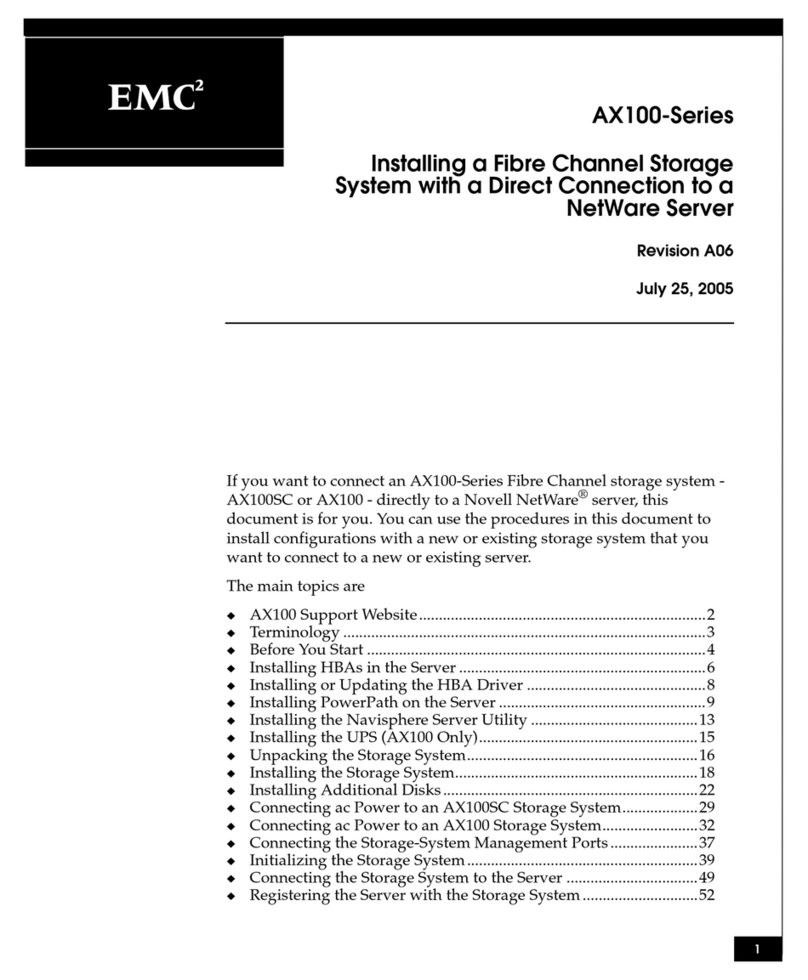
EMC2
EMC2 AX100 Series manual
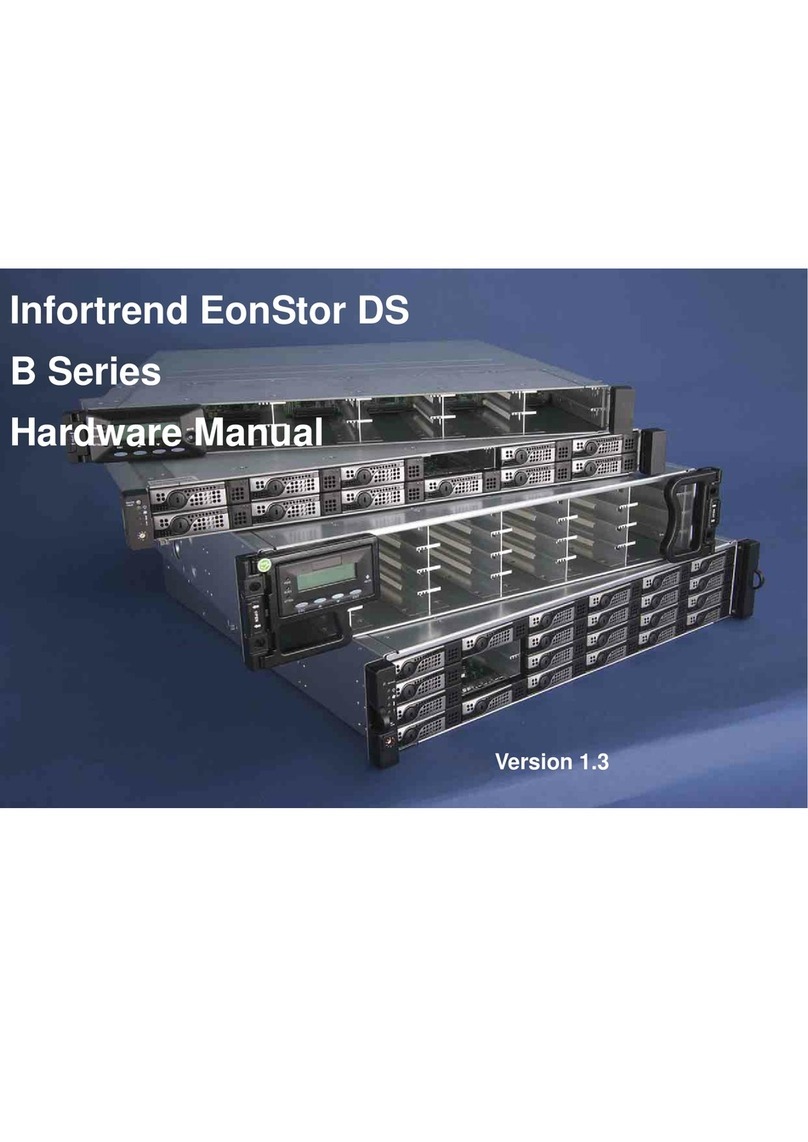
Infotrend
Infotrend EonStor DS B Series Hardware manual
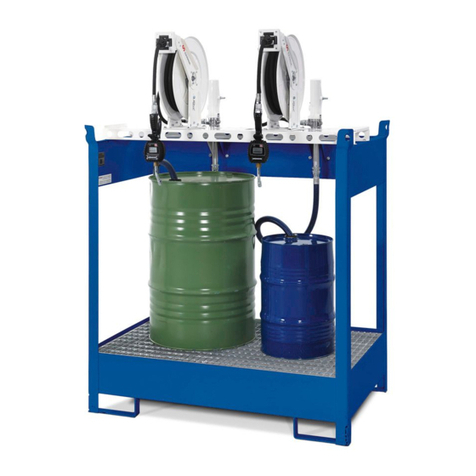
Denios
Denios HazMat station EPO-2 Operation manual and spare parts list

ATTO Technology
ATTO Technology FastStream SC 5500 Technical specifications
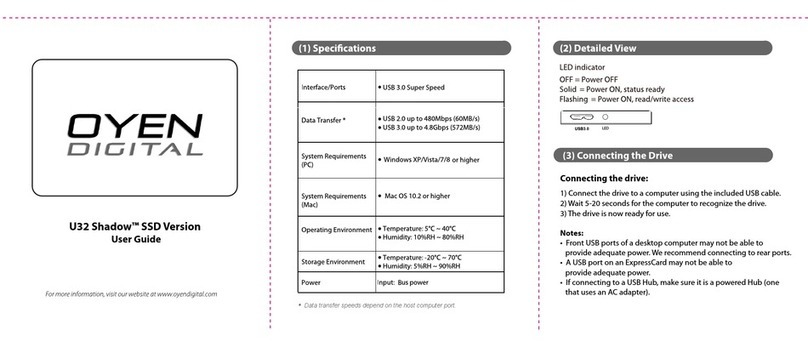
OYEN DIGITAL
OYEN DIGITAL U32 Shadow user guide
